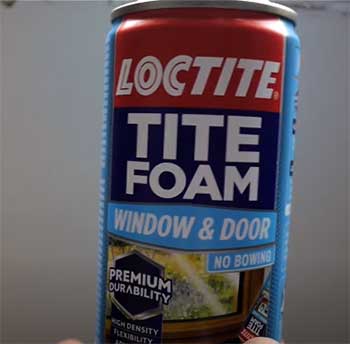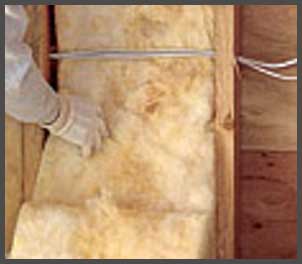Properly insulating around windows is crucial for boosting energy efficiency, reducing noise, and preventing drafts in your home.
When it comes to window insulation, two of the most popular options are spray foam and fiberglass. But which one is the better choice for insulating around your windows?
Here is an in-depth comparison of spray foam vs fiberglass window insulation to help you decide.
A Brief Comparison Table
| Comparison | Spray Foam | Fiberglass Batts |
| Installation | Professional, specialized equipment required | DIY-friendly, no special tools needed |
| Air Sealing Ability | Expands and seals cracks for superior air barrier | Can leave gaps that allow air leaks |
| R-value Per Inch | R-5.8 to R-7.7 per inch | R-3 to R-4 per inch |
| Cost | $1.50-$3 per square foot installed | $0.45-$1 per square foot |
| Durability | Long-lasting, 50+ year lifespan | Settling and compression over time |
| Noise Reduction | Expands to seal sound gaps | Good sound absorption |
| Moisture Resistance | Low permeability and absorption | Absorbs moisture, needs vapor barrier |
| Off-Gassing | Some products have moderate VOC off-gassing | No off-gassing |
| Toxicity | Typically non-toxic when cured | Non-toxic but irritating glass fibers |
Spray Foam Window Insulation
Spray foam insulation is a versatile insulating material that has become increasingly popular for insulating around windows. Here is an overview of how it works and its key benefits:
How It Works?

Spray foam insulation consists of two liquid chemical compounds that are kept separated until application.
During application, the two compounds are mixed together, causing a chemical reaction that results in quick expansion and hardening of the foam.
The foam expands to fill cracks, gaps, and spaces as it hardens.
Around windows, a professional will use a spray foam gun to apply the foam in between the window frame and the rough opening.
The foam seals and adheres tightly around the window frame and to the surrounding structure. Once cured, it forms a seamless air barrier and insulation around the window.
Key Benefits
- Superior seal – Spray foam insulation expands and seals tightly in gaps and cracks that other types of insulation may miss. This creates a superior air barrier around the window to prevent drafts.
- Higher R-value – Spray foam has an R-value of R-5.8 to R-7.7 per inch, providing excellent insulating performance in a small space. Even just a one-inch application provides outstanding insulation around a window.
- Reduces condensation – The airtight seal of spray foam helps reduce condensation and moisture problems around windows.
- Noise reduction – By sealing gaps and cracks, spray foam can help dampen outside noise coming in through windows.
- Minimizes framing – The structural strength of cured spray foam means window framing can be minimized for more glass exposure.
- Long-lasting – Properly installed spray foam has a long lifespan of over 50 years.
Potential Drawbacks
- Higher cost – Spray foam typically costs more upfront than fiberglass batt insulation. Professionally installed spray foam costs $1.50-$3 per square foot.
- Off-gassing – Some spray foams off-gas VOCs as they cure, requiring ventilation during and after application. Low VOC options are available.
- Messy application – The spraying process is messy, overspray can occur, and clean-up requires solvents. Drop cloths and masking is necessary.
- Can compress – Spray foam experiences creep compression over time, slightly reducing its insulation value.
Fiberglass Insulation for Windows
Fiberglass batt insulation remains one of the most commonly used types of insulation around windows. Here is an overview of how it works and its pros and cons:
How It Works?

Fiberglass insulation consists of small glass fibers bonded together with thermosetting resins.
The fibers trap air to resist conducted and convected heat flow.
For window insulation, preformed fiberglass batts are cut to fit tightly into the rough opening around the window frame.
Batts should completely fill the depth of the opening without being overly compressed. The friction fit helps hold them in place.
Key Benefits
- Low cost – Fiberglass batt insulation is one of the most affordable insulation options at $0.45-$1 per square foot.
- Easy installation – Batt installation around windows is straightforward for DIYers, requiring no special skills or spraying equipment.
- Good sound absorption – Fiberglass absorbs sound vibrations well, providing decent noise reduction around windows.
- Non-toxic – Fiberglass is made from recycled glass and non-toxic binders, making it safe for homeowners. No off-gassing occurs.
- Available in various R-values – Batts come in R-values from R-11 to R-21 to meet local code requirements.
Potential Drawbacks
- Gaps – Poor DIY installation often leaves gaps that reduce effectiveness. No expansion occurs to fill cracks.
- Settling and compression – Fiberglass settles over time, losing some R-value and leaving gaps around windows.
- Not airtight – Lots of air leakage can still occur through and around batt-insulated windows.
- Moisture issues – Fiberglass absorbs moisture which can encourage mold growth. A vapor barrier is recommended.
- Irritating to work with – Loose glass fibers can be irritating to skin, eyes, and lungs during handling.
Which Is Better Around Windows?
So when comparing spray foam vs. fiberglass insulation around windows, which type comes out on top? Here is a summary of the key differences:
- Air sealing – Spray foam provides a superior air barrier around windows compared to fiberglass batts. This results in better insulation performance.
- Higher R-value – Spray foam packs more insulating power inch-for-inch than fiberglass. Less thickness is needed to achieve the same insulation levels.
- Installation – Professional spray foam installation achieves better and consistent results than DIY fiberglass batt installation.
- Durability – Spray foam maintains its insulation properties over time much better than compressed, settling fiberglass.
- Vapor control – Spray foam’s low permeability reduces condensation issues around windows. Fiberglass requires an additional vapor barrier.
- Noise reduction – Both offer decent noise reduction, but spray foam seals cracks that can transmit noise through windows.
- Cost – Spray foam has a higher upfront cost, but also greater long-term insulation performance and durability per inch.
Best Practices For Insulating Around Windows
Whichever insulation type you choose, follow these best practices for professional-quality window insulation:
- Clean the window frames and rough openings before installing insulation. Seal any cracks or holes with caulk.
- For spray foam – mask off any areas not intended for foaming, such as window and door frames. Wear protective gear.
- For fiberglass – wear gloves, long sleeves, and eye protection when handling batts.
- Use the minimal framing necessary around the windows for maximum insulation space.
- Install a vapor barrier on the warm-in-winter side before insulating. FACE paper or kraft paper works for fiberglass.
- Insulate to meet or exceed your climate’s recommended R-value for windows. This is often R-3 to R-5 minimum.
- On the exterior, install weatherstripping around windows and use exterior caulk or flashing to seal any gaps.
Following proper installation practices results in well-insulated, draft-free windows for improved comfort and energy savings. Contact a qualified spray foam insulation contractor if you determine this is the best type of insulation for your windows.
Frequently Asked Questions (FAQ)
Yes, spray foam is generally considered a superior insulation option around windows compared to fiberglass batts. When professionally applied, it air seals cracks and gaps more completely, achieves a higher R-value, and is more durable long-term.
The best practice is to clean and seal the rough opening, install a vapor barrier, and use high-expanding spray foam insulation to completely seal around the window frames. Fiberglass batts can also be effective if installed well and combined with exterior air sealing.
Spray foaming around windows is highly recommended. It seals air leaks, minimizes condensation issues, reduces noise, boosts insulation levels, and prevents drafts around windows. Use low expansion foams designed for windows to avoid excessive pressure.
For window applications, low-expansion polyurethane foams (0.5-1 pound density) are best. They adequately seal with less pressure than standard insulation sprays. Look for foams designed for windows that remain flexible and meet fire code standards.
Final Thoughts
For most homeowners, spray foam is the better overall option for insulating around windows. But for DIYers on a tight budget, fiberglass batts remain a reasonable alternative.
Combining spray foam around the perimeter with fiberglass batts for the rest of the rough opening is also an option.

